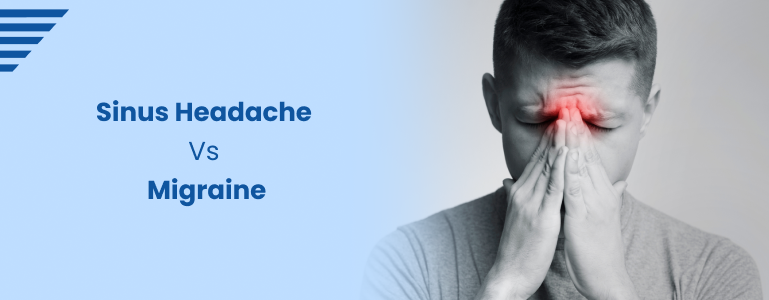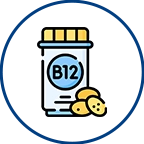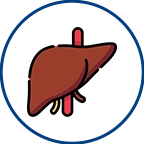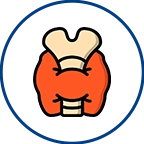Sinus Headache vs. Migraine: Understanding the Key Differences

Headaches can be incredibly debilitating, affecting our ability to work, socialize, and enjoy life to the fullest. Two common types of headaches that often get confused are sinus headaches and migraines. While they share some similar symptoms, they are distinct conditions with different causes and treatments. Understanding the key differences between these two types of headaches can help you better manage your symptoms and seek appropriate medical care.
Sinus Headaches
What Are Sinus Headaches?
Sinus headaches are typically associated with sinusitis, which is the inflammation of the sinus cavities. Your sinuses are air-filled spaces in your skull that are lined with mucus membranes. When these membranes become inflamed due to infection, allergies, or other irritants, they can cause pain and pressure in the forehead, cheeks, and around the eyes.
Key Characteristics of Sinus Headaches:
Location: The pain is usually localized in the forehead, cheeks, and the bridge of the nose. It often feels like a constant, dull ache or pressure.
Symptoms: Sinus headaches are often accompanied by other sinus-related symptoms such as congestion, runny nose, facial tenderness, and a feeling of fullness in the ears.
Triggers: Common triggers for sinus headaches include colds, allergies, sinus infections, and changes in air pressure (like during airplane flights).
Duration: Sinus headaches tend to last as long as the underlying condition causing the inflammation persists. This can range from a few days to several weeks.
Treatment for Sinus Headaches:
The primary goal of treating sinus headaches is to address the underlying cause, such as sinusitis. Treatment options may include antibiotics for bacterial infections, decongestants, antihistamines for allergies, and saline nasal sprays. Over-the-counter pain relievers like ibuprofen or acetaminophen can help alleviate the pain and discomfort.
Home Sample Collection
Migraines
What Are Migraines?
Migraines are a neurological condition characterized by recurrent, intense headaches. They often come with a variety of symptoms beyond head pain, such as nausea, vomiting, and sensitivity to light and sound. Migraines can significantly disrupt daily life and may last for hours or even days.
Key Characteristics of Migraines:
Location: Migraine pain can occur on one side or both sides of the head and is often described as a pulsating or throbbing sensation.
Symptoms: Migraines are often accompanied by visual disturbances (aura), nausea, vomiting, and extreme sensitivity to light, sound, and smells.
Triggers: Migraine triggers can vary widely from person to person and may include stress, certain foods, hormonal changes, lack of sleep, and environmental factors.
Duration: Migraines typically last anywhere from a few hours to several days and can be severe enough to interfere with daily activities.
Treatment for Migraines:
Migraine management involves a combination of lifestyle changes, preventive measures, and acute treatments. Some common strategies include identifying and avoiding triggers, managing stress, maintaining regular sleep patterns, and staying hydrated. Medications such as triptans, anti-nausea drugs, and preventive medications may be prescribed by a healthcare provider to manage migraine attacks.
Key Differences
Now that we've discussed sinus headaches and migraines individually, let's highlight the key differences between them:
Underlying Cause: Sinus headaches are primarily caused by sinus inflammation, while migraines are a neurological condition with complex causes, including genetic factors.
Location of Pain: Sinus headaches typically cause pain in the forehead and facial areas, whereas migraines often affect one or both sides of the head.
Accompanying Symptoms: Migraines are known for their wide range of accompanying symptoms, including nausea, vomiting, and sensory sensitivities, while sinus headaches are usually accompanied by sinus-related symptoms.
Triggers: Sinus headaches are often triggered by sinus infections or allergies, while migraines can be triggered by a wide array of factors, including hormonal changes and stress.
Duration: Sinus headaches tend to persist as long as the underlying condition is present, while migraines can last for hours to days, regardless of external factors.
Conclusion
Differentiating between sinus headaches and migraines is crucial for effective treatment. If you're unsure about the type of headache you're experiencing or if your headaches are severe and recurring, it's important to consult with a healthcare professional for a proper diagnosis and tailored treatment plan. Managing these conditions effectively can significantly improve your quality of life and reduce the impact of headaches on your daily activities.
Frequently Asked Questions
What is a sinus headache, and how does it differ from a migraine?
A sinus headache is primarily caused by inflammation of the sinus cavities, typically due to sinusitis or allergies. The pain is often localized in the forehead, cheeks, and around the eyes. In contrast, a migraine is a neurological condition characterized by recurrent, intense headaches that can occur on one or both sides of the head and are often accompanied by nausea, vomiting, and sensory sensitivities.
What are the typical symptoms of a sinus headache?
Typical symptoms of a sinus headache include a constant, dull ache or pressure in the forehead, cheeks, and nose area. Sinus-related symptoms like congestion, runny nose, and facial tenderness often accompany the headache.
What are the common triggers for sinus headaches and migraines?
Sinus headaches are frequently triggered by factors such as sinus infections, allergies, and changes in air pressure (e.g., during flights). Migraine triggers can vary widely from person to person and include stress, hormonal changes, certain foods, lack of sleep, and environmental factors.
How long do sinus headaches and migraines typically last?
Sinus headaches tend to last as long as the underlying condition causing the inflammation persists, which can range from a few days to several weeks. Migraines, on the other hand, can last from a few hours to several days, with some individuals experiencing recurring episodes.
Are there any visual disturbances associated with sinus headaches?
Visual disturbances like auras (flashing lights, zigzag lines, or blind spots) are not typically associated with sinus headaches. These are more common in migraine episodes, specifically in a subtype called "migraine with aura."
Can over-the-counter pain relievers help with both sinus headaches and migraines?
Yes, over-the-counter pain relievers like ibuprofen or acetaminophen can provide some relief for both sinus headaches and migraines. However, the treatment approach for migraines often involves specific migraine medications, such as triptans, to target the underlying cause and alleviate symptoms.
Should I consult a healthcare provider for my headaches, and when is it necessary?
If you experience severe or recurrent headaches that disrupt your daily life, it's essential to consult a healthcare provider. They can help diagnose the type of headache you're experiencing and develop a personalized treatment plan. If your headaches are accompanied by neurological symptoms, sudden changes in headache patterns, or other concerning signs, seek medical attention promptly.
Can sinus headaches turn into migraines, or vice versa?
Sinus headaches and migraines are distinct conditions with different causes. However, chronic sinusitis or frequent sinus infections may exacerbate or trigger migraines in some individuals. It's crucial to manage and treat any underlying conditions to reduce the risk of headache symptoms.
Book Your Slot
Our Locations Near You in Hyderabad
3KM from Banjara Hills
1.9KM from Yusufguda
3KM from Madhura Nagar
5KM from Shaikpet
Profiles
- Cardiac Risk Profile
- Pituitary marker Profile
- Rheumatoid Arthritis Profile
- Dengue Fever Panel
- Lung Cancer Panel 1 Complete Molecular
- Gastroenteritis Screening Panel
- Thyroid Profile (T3,T4,TSH), Serum
- Pancreatic Marker Profile
- STD profile
- Androgen Profile
- Lipid Profile, Serum
- Pancreatic(acute)Profile
- PCOD Profile
Radiology
Pathology Tests
- Glucose Fasting (FBS),Sodium Fluoride Plasma
- Creatinine, Serum
- Glycosylated Hemoglobin (HbA1C)
- Vitamin B12 (Cyanocobalamin), Serum
- Thyroid Stimulating Hormone (TSH) Ultrasensitive, Serum
- Complete Urine Examination (CUE), Urine
- Liver Function Test (LFT),Serum
- Dengue (IgG & IgM), Serum
- Dengue Antigen (Ns1) Rapid, Serum
- C-Reactive Protein (CRP), Serum
- Widal (Slide Method), Serum
- Total IgE, Serum




